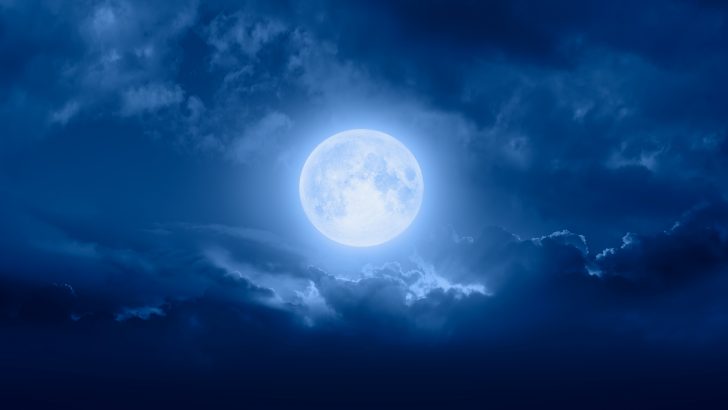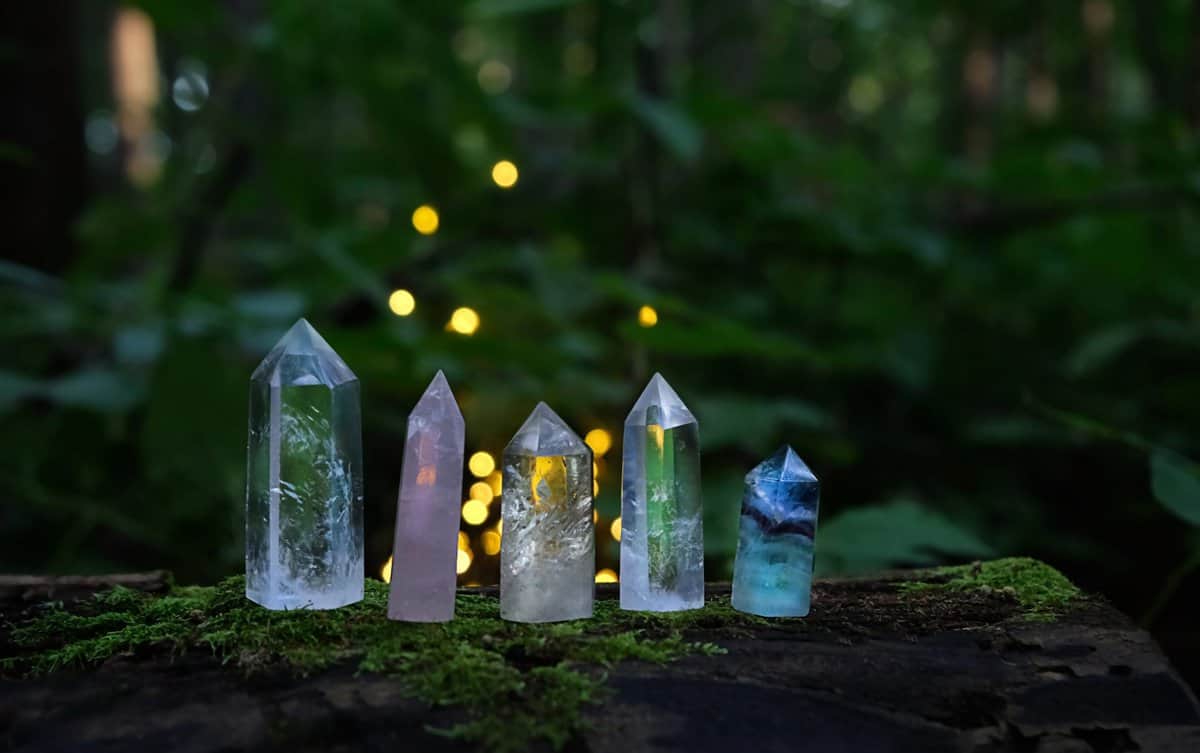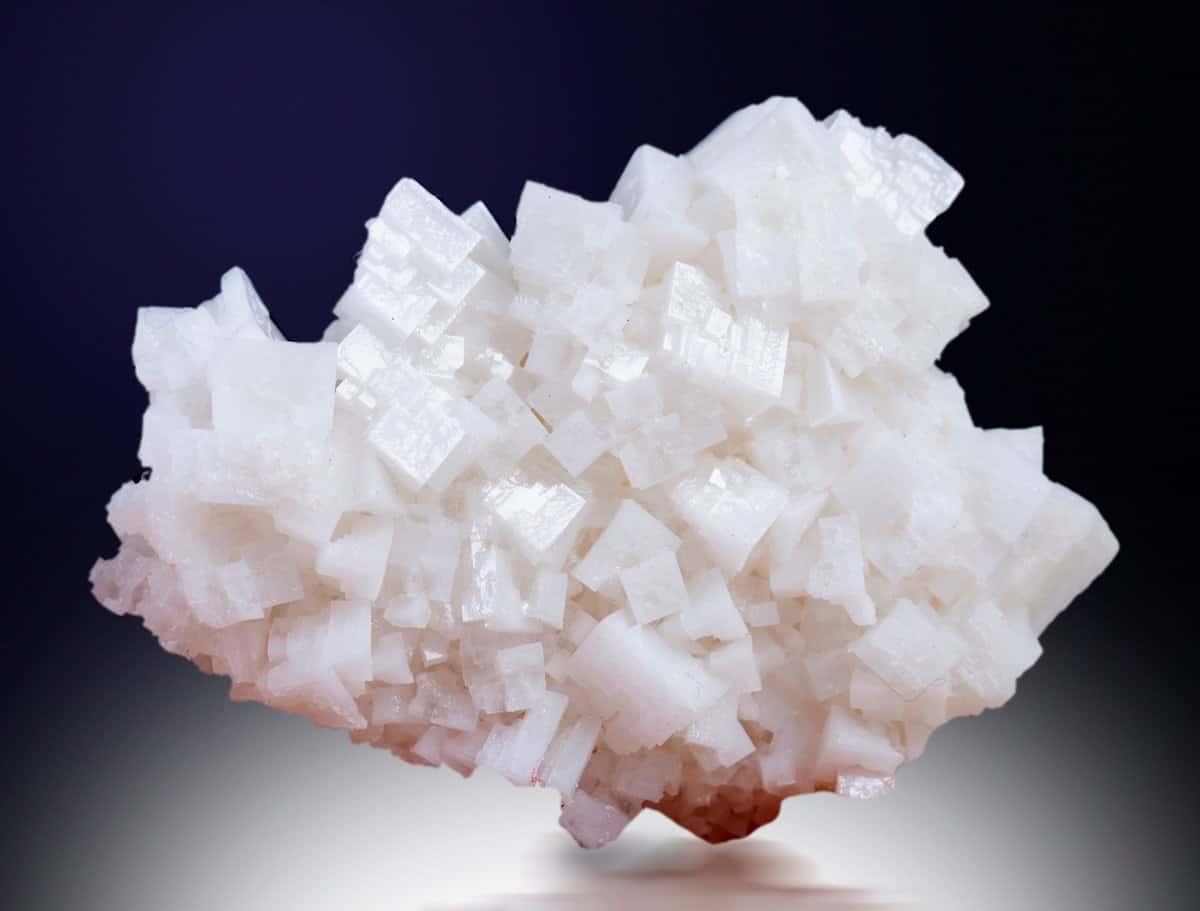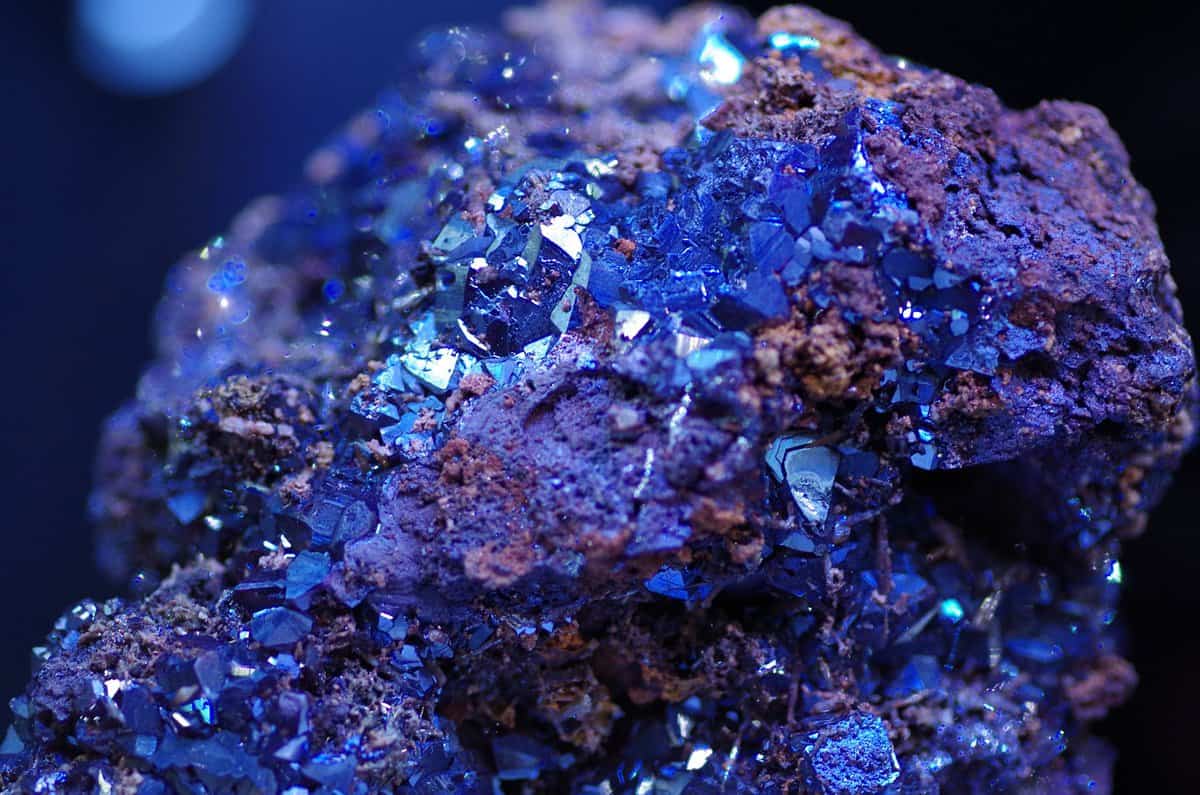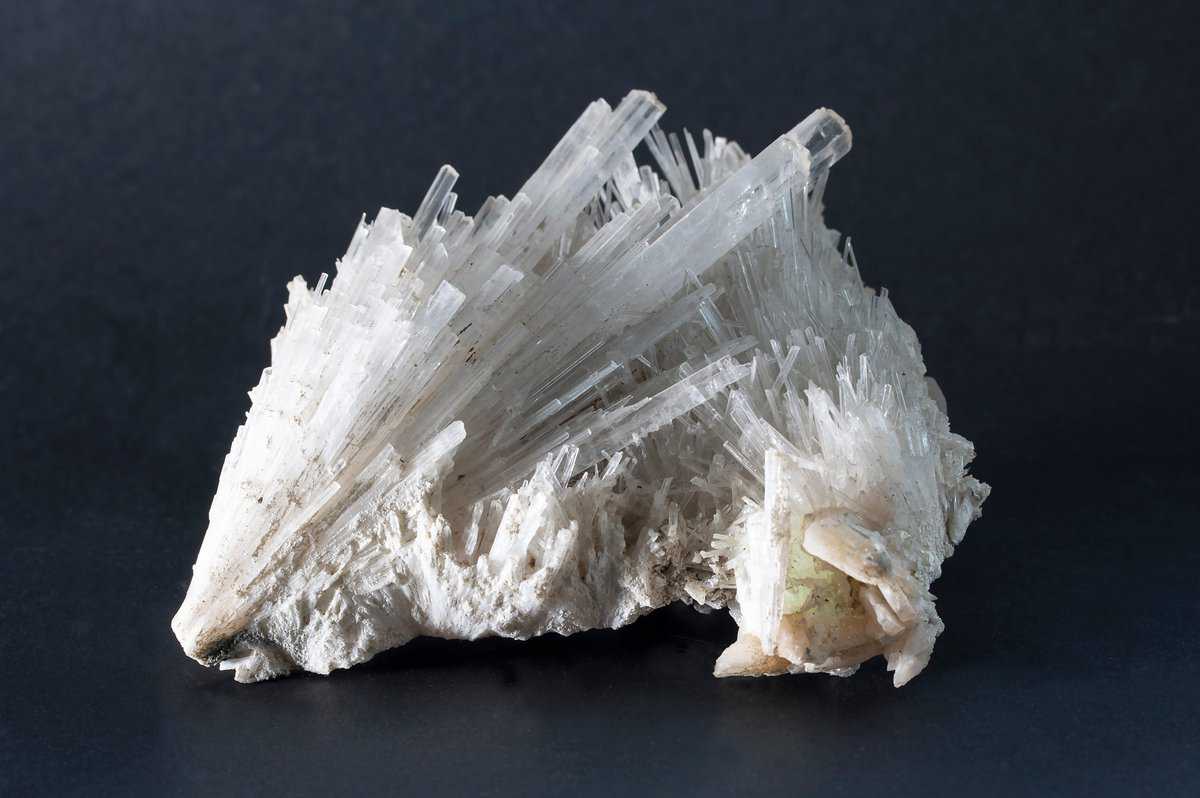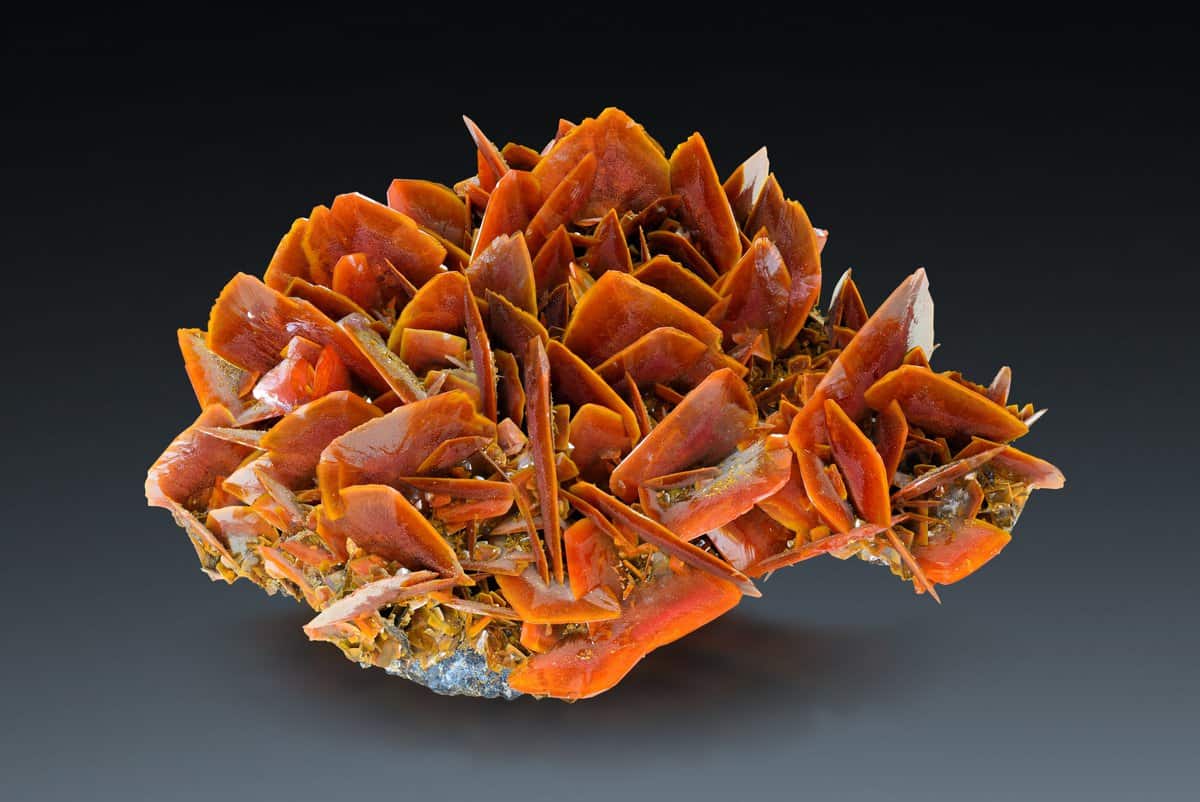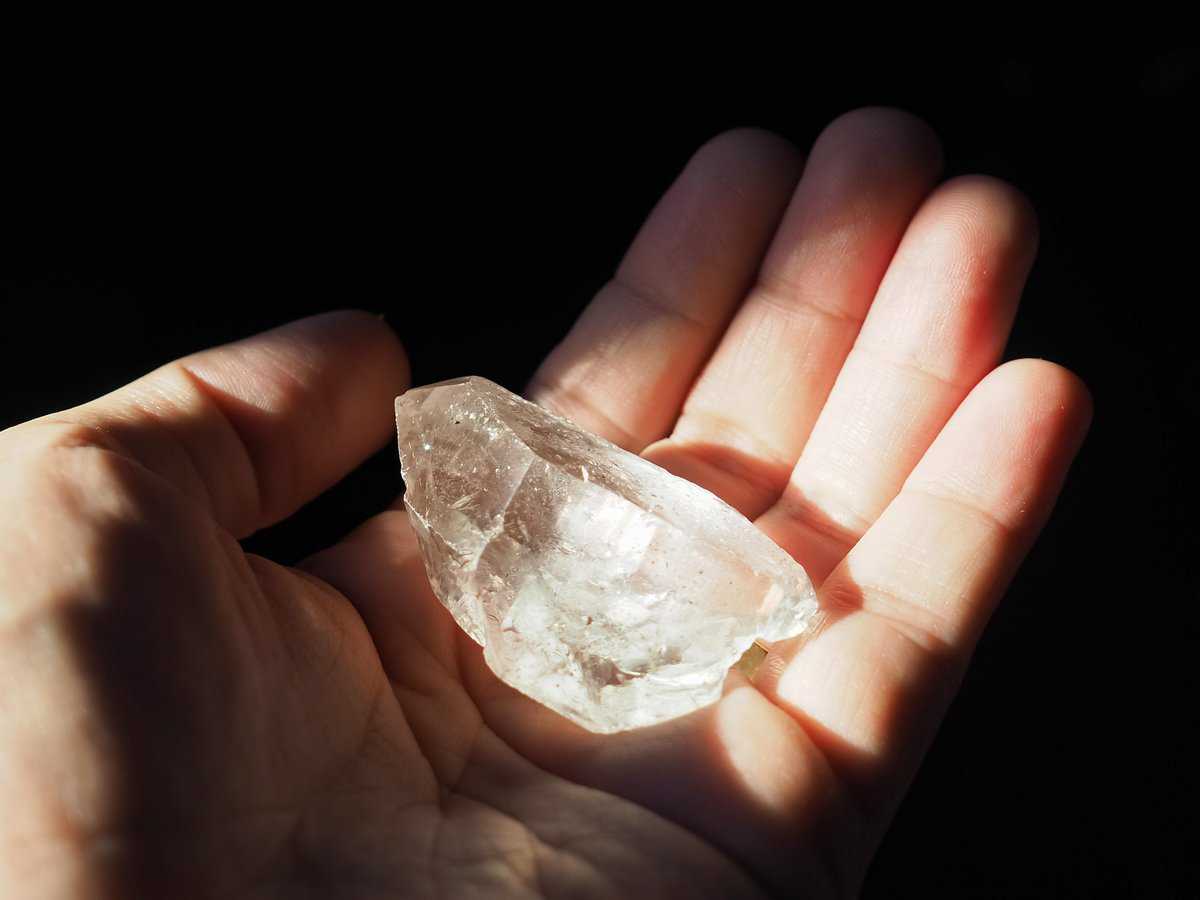Which crystals cannot be charged in the moonlight? And which crystals can?
And what are the benefits of charging crystals in the moonlight?
We’re here to answer all of these questions and more.
A crystal bathed in the ethereal light of the moon amplifies its qualities. The moon infuses crystals with calm, serene energies, charging them with a pure and cleansing glimmer.
The energies amplified depend on the crystal in question.
However, not all crystals should be charged or exposed to the moon’s soft light.
Some crystals are fragile and light-sensitive. Exposing them to the moon’s light may compromise their structural integrity, weaken their energy, and scatter their vibrations.
So, it’s crucial to understand which crystals cannot be charged in the moonlight.
But before we explore what crystals to avoid charging, let’s look at the benefits.
Benefits of Charging Crystals in the Moonlight
The benefits of lunar energy should not be overlooked.
The soft, silvery embrace of the moon can be potent in amplifying crystals.
Charging or cleansing crystals with the moon’s help can reset their properties.
The more you take care of your crystals, the more help they radiate in return.
It’s a give-and-take journey. And your crystals are your loyal companions.
So, what are the benefits of a crystal charged in the moonlight?
Well, it depends on the crystal. Moonlight infuses some stones with a calm energy, promoting emotional balance. Other gemstones receive wisdom and enhance intuition.
The moon’s glow may even spark the crystal into a conduit of spiritual awakening.
You may feel connected to higher realms, more in tune with your inner self.
Moonlight-charged crystals bring a touch of the mysterious and the otherworldly into your day-to-day life, soothing your spirit and unraveling your mind and soul in powerful ways.
You know how powerful crystals can be – so why not make them even more refined? It’s just a matter of placing the right crystals in the right place and letting the magic unfold.
The light of the moon does the rest, enhancing and empowering them.
For example, placing an amethyst crystal to soak up the moon’s glow amplifies its calming energy, improving your sleep and helping you wake up in a vibrant light.
It boosts the healing properties of a clear quartz crystal, making it a fine tool for overcoming emotional barriers, lessening pain, and carving a path to self-recovery.
So, the benefits of a charged crystal are potent and numerous.
However, not all crystals should be charged in the moonlight.
Being careless might empty its spiritual energy or, worse, corrupt it.
So, it’s important to study which crystals cannot be charged in the moonlight.
1 • Halite
Halite is fragile and sensitive to moisture and moonlight.
It can crack and crumble if you’re not careful where you place it.
When the structure of a halite crystal weakens, its energies fluctuate.
But what are the spiritual properties of a halite stone, anyway?
The vibrations of this pink-colored crystal cultivate self-love. In its presence, peace and harmony thrive. With its help, you can heal your emotional wounds and regain clarity.
In this sense, this crystal resonates with the guidance of Angel Number 1666.
That being said, halite crystals are not suited to be charged or cleansed in the moonlight.
The more you expose it, the more its structural integrity weakens.
Eventually, it can fracture and break into smaller pieces.
So, how can you prolong its longevity and amplify its energies?
Ideally, you want to keep halite crystals in a safe, dry environment.
You may charge it in sunlight for a minute or two – but not longer.
Sunlight can cause its beautiful pink color to fade.
Luckily, there are many other safer ways to recharge or cleanse a halite stone.
You can bury it in the soil, place it in a singing bowl, or around other crystals known for recharging and cleansing, like a clear quartz crystal. You can also burn incense over it.
2 • Selenite
Selenite is a highly transparent, translucent crystal.
The fragility of this mineral takes center stage. It is brittle, sensitive, and frail.
High in water content – it’s particularly vulnerable to moisture. When exposed to moonlight charging, a selenite crystal loses its clarity and turns opaque or foggy.
Make sure you take the necessary steps to preserve this sensitive mineral.
Direct moonlight exposure may result catastrophically. So, opt for more suitable methods.
The water inside selenite crystals gives them a deeper dimension of spiritual power.
For example, carefully placed selenite crystals can sharpen your mental ability. They improve your decision-making and unlock the doors to spiritual insight and knowledge.
This mineral thins the veil between the spiritual and the material realm.
In its presence, you feel more attuned to your inner self.
You may notice the similarity with the Angel Number 669.
But if you want to cleanse and charge it, avoid placing it in direct moonlight.
One of the best alternative methods is to use sound recharging. What does that mean? It means placing your selenite crystals in a singing bowl, for example, and using vibrations.
This stabilizes the crystal and eliminates any traces of negative energy.
But a selenite crystal charged in the moonlight may have a disastrous outcome.
You also want to avoid exposing it to sunlight.
Some crystals can be renewed in water – but not selenite. A selenite crystal is made of gypsum. Soaking it in water can dissolve it. You can only rinse it for a few seconds safely.
Then, you can wipe it with a soft cloth, cleansing its energy.
Remember: look after your crystals, and they will look after you.
Selenite energy crystals have much to offer, but they demand extra care.
3 • Azurite
If you’re wondering which crystals cannot be charged in the moonlight, let’s add azurite to the list – a light-sensitive crystal best kept in a safe, dry environment, away from water.
The rich blue of an azurite crystal leaves no room for indifference.
From within its ethereal structure, the symbolism of tranquility radiates an all-encompassing aura, evoking feelings of serenity. For many, it’s the crystal of harmony.
And its beauty more than matches the power and potency of this crystal.
But these precious stones are best left in a safe spot.
Moonlight charging dulls its deep blue hues and causes integral damage.
It becomes less vibrant. In rare cases, it may even turn green.
Now, these signs tell us of the azurite’s sensitivity. Even the slightest hint of surface damage or a loss of energetic potency can dull its power and undo the vibrancy it offers.
So, you want to take extra precautions to ensure its power and longevity.
Despite its sensitivity, an azurite crystal is a powerful source of wisdom.
The message it brings rings true with the Angel Number 7007.
For many people, it has triggered a spiritual awakening. Gazing into it reveals uncharted, unexplored worlds of knowledge. And it invites you to embark on a self-reflective journey.
It enhances your vision and boosts the third eye chakra.
And it may even help establish a connection with your spirit guides.
So, you want to preserve it. But what’s the best way for these crystals to charge?
Some claim that azurite crystals can be left on the edge of the window to soak up starlight and cleanse its ethereal energy. But there are other safer alternative methods to explore.
These precious stones can fade and erode when charged in the moonlight.
Don’t soak them in water because they’re water-sensitive.
Instead, you can meditate and share your energy with the crystal. You can breathe into it, infusing the stone with your life force. You can use sound vibrations to empower it.
Even affirmations work wonders for crystals that demand extra care and precaution.
So, keep this in mind as you tend to these beautiful blue crystals.
4 • Scolecite
Scolecite is a beautiful crystal, but how do you charge it?
Leaving it out to soak up the moon’s glow is a bad call. This delicate crystal can be damaged by exposure to light and moisture. Morning dew erodes its sensitive structure.
The white purity of the crystal can dissolve and lose its sharpness.
Moonlight charging may alter its energetic properties – or dull them entirely.
Because it’s so sensitive – take extra care to preserve it.
But what are the alternatives for scolecite crystals to charge?
Due to its delicate nature, you want to keep it in a dry, moisture-free environment. And to charge it – it’s best to use other options, like vibrations and exposure to other crystals.
Besides moonlight, these crystals are highly sensitive to sunlight, too.
You can let them warm up for a minute – but anything beyond that is a risk.
But what are the qualities of scolecite crystals?
For many, this precious stone resembles a source of spiritual knowledge.
Like the Angel Number 6000, it leads to deeper insights.
Its energies unravel the soul, triggering a spiritual awakening. To be more exact, it opens the doors of spirituality and invites you to embrace the journey of learning and growth.
With its help and aura, you can connect your inner self with the higher realm.
But moonlight charging can dull its potential. So, exercise care.
Besides its spiritual properties, scolecite crystals have a needle-like design. But don’t confuse its sharpness with violence. This crystal radiates an all-encompassing calmness.
Being next to it soothes and heals. It helps you relax after a long day at work.
You can use it in many ways due to its versatility.
But when cleansed or charged in the moonlight, its energies may fluctuate.
That’s why it’s crucial to understand which crystals cannot be charged in the moonlight.
5 • Wulfenite
It takes some know-how to charge crystals. The moon affects them differently.
With wulfenite, be extra careful because this fiery crystal contains lead.
Exposing it to moonlight or sunlight may release toxic fumes.
So, it’s best to charge and cleanse wulfenite crystals in other ways.
You want to place these crystals in safe spots.
But what does a wulfenite crystal do, anyway?
Wulfenite crystals brim with passion and intensity. The fiery red energy of these crystals infuses those around them with creativity, inspiring them to unlock their true potential.
It’s an essential gem that does wonders for the sacral chakra.
And it’s a healing crystal in that it reignites the fire within.
Having it in your collection can help you rediscover confidence and determination as you pursue your dreams and desires. But it’s a crystal that requires time and patience.
Use it when you feel lazy and uncertain about your passions.
Use it when hope wavers or when facing tough challenges.
This vibrant gem ignites the flames of growth and propels you forward.
Luckily, there are other ways to charge it besides placing these crystals in the moonlight.
Wulfenite stones can be buried underground and enriched with earthly energy.
With that kind of energy, these crystals become so much more powerful. When buried in soil, you can charge and cleanse these stones, knowing their properties will remain pure.
You don’t want its glow to diminish by charging these crystals in the moonlight.
The energy of the moon tempts us to harness its power, but crystals react in unique ways. And if you want your collection to grow, you must know what’s safe and what’s not.
And that’s why we’re here to help you learn how to charge crystals.
Which Crystals Can Be Charged in the Moonlight?
Now that you know which crystals cannot be charged in the moonlight – it opens the door to another question. Which crystals can be safely cleansed or charged in the moonlight?
Every crystal can harness lunar power – but there are risks involved.
Some crystals are more sensitive to the moon than others.
By exposing them to moonlight, these crystals can deteriorate and alter.
But there are some crystals that vastly benefit from being charged in the moonlight.
For example, a clear quartz or a rose quartz crystal is perfect for the moon. An amethyst and moonstone crystal harnesses the gentle energy of the moon in a beautiful way.
And if it’s the full moon, your crystals may unlock hidden energies.
When graced by moonlight, crystals become intuitive, powerful, and even life-changing.
Time plays a crucial part, too. Some stones can only be exposed for a while. But some can be left overnight to soak up the moon’s glow, growing stronger with each passing hour.
This is a lot to take in. So, take your time.
Pick one crystal and look up how it reacts to the moon’s energy. And then try it out for yourself. Let this be a gradual learning experience as you cleanse and charge your stones.
Remember: knowing which crystals cannot be charged in the moonlight helps you preserve their spiritual and structural integrity. And your crystals will thank you in return.
In Conclusion
So, which crystals cannot be charged in the moonlight?
Knowing how to charge crystals helps you unlock their true potential. But charging crystals depends on the stone in question. Some react poorly to moonlight, like halite.
It takes some know-how to cleanse and charge crystals.
But placing crystals in the moonlight can either amplify or deteriorate.
Now that you know how to charge crystals – feel free to experiment.
And it helps to know other methods, too.
The more knowledge you have about charging crystals, the better.
So, let this be the start of your journey as you harness the moon’s energy.
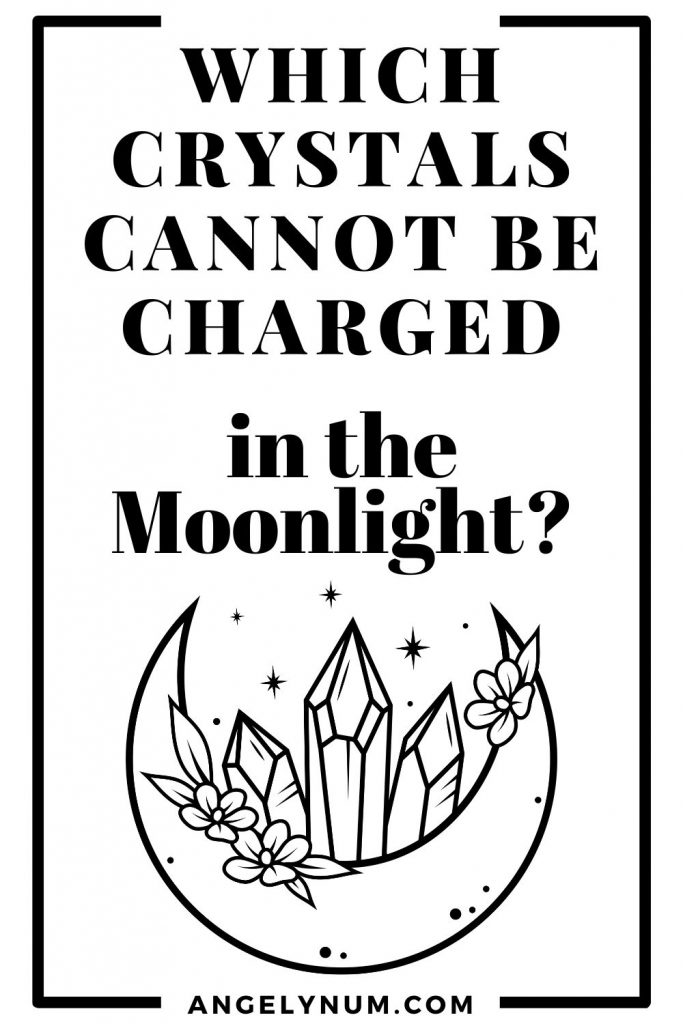

Painting and writing – these are two passions that I have been perfecting for a decade. I’m passionate about exploring the connections between the stars and numbers. Through insightful articles you can learn how these ancient practices can offer guidance, clarity, and self-discovery.

